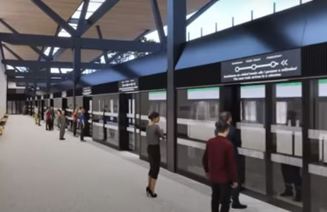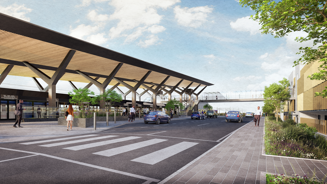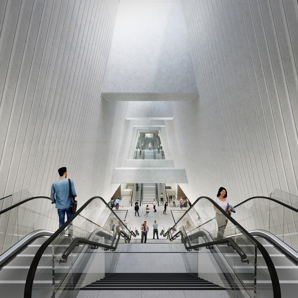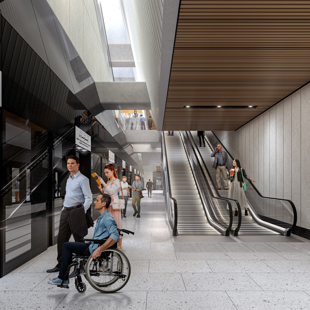Vision
Automation
Since MetroLink will be segregated from all other traffic, including pedestrians and cyclists, we have a great opportunity to make it a driverless system. Other train lines are adapting automation into their existing systems which is challenging. MetroLink has a significant advantage as we can design for automation from the start.
MetroLink will model itself on the Copenhagen Metro and the fully automated lines on the Barcelona Metro, which utilise proven automated train control systems. The trains are supervised from a control centre run by operational, security and safety staff who can monitor every carriage, station and platform through CCTV and communicate with passengers by public address. Passengers can contact controllers directly from their carriage.
Since operators no longer need to work in isolation driving the train, the entire focus of staff switches to passengers’ needs. With technology doing so much of the work, train staff become customer-facing, which improves the experience for customers.

Automated systems are extremely safe as the capacity for human error is eliminated and advanced signalling technology improves safety. The platform edge is blocked by screens to prevent anyone falling onto the tracks. When the metro has fully stopped, the train doors line up with screen doors and they open simultaneously so passengers can board the train safely. Then they close together, and the train moves off.
Timetables are both more flexible and reliable as trains can adapt to changing circumstances quickly. Choosing automation also fed into the decision on tunnel types. You can read about the advantages of this decision in Chapter 5 of the Public Consultation Document For The Preferred Route.
Station Design

The station locations have been chosen to make them accessible to the greatest number of people, both from their homes and places of work. The architecture of the stations is important as this is the space passengers will experience most. The design concept for MetroLink stations has been developed by Grimshaw Architects and applied by Idom, the Spanish engineers who have designed metros all around the world including Barcelona.
As urban transport systems have evolved so too has station design, especially at ground level where we expect something more than mere access to an escalator. Modern stations are expected to interact with the urban environment and increase rather than decrease the value of the public space.

Our design vision has the following goals:
- People focused
the stations should be inclusive, accessible, and enjoyable to use by all passengers - Safe and secure there should be clear lines of sight with few corners, so people can see who and what is coming towards them.
- Efficiency
the stations need to provide elegant engineering solutions. - Legibility
navigation should be naturally intuitive; the space uncluttered and clear up-to- date information easily accessible. - Sense of place
the design should be appropriate to Dublin and provide context and character. - Timeless
the stations should be future-proofed and be easy to maintain and operate.
Accessibility: Design for All
 The NTA Greater Dublin Area Transport Strategy states that transport infrastructure and services must be inclusive for all by virtue of their design and layout.
The NTA Greater Dublin Area Transport Strategy states that transport infrastructure and services must be inclusive for all by virtue of their design and layout.
Even with modifications in recent years, older forms of public transport that weren’t designed with accessibility as a priority often provide challenges to some passengers with reduced mobility or sensory impairments.
MetroLink will incorporate universal design from inception with “accessibility for all” at the core of the project.
The entire system, including stations, level- boarding trains and platforms will be fully accessible for wheelchair and pushchair users. This will also make luggage easier to handle.
The trains will be equipped with audio and visual ‘next stop’ announcements to assist people with visual or hearing difficulties.
All written, printed, online and verbal communication of travel information and other news to the public will be produced in a clear, legible and easily understood manner using plain language.
The screens protecting the platform edge prevent falls onto the tracks, bringing extra safety.